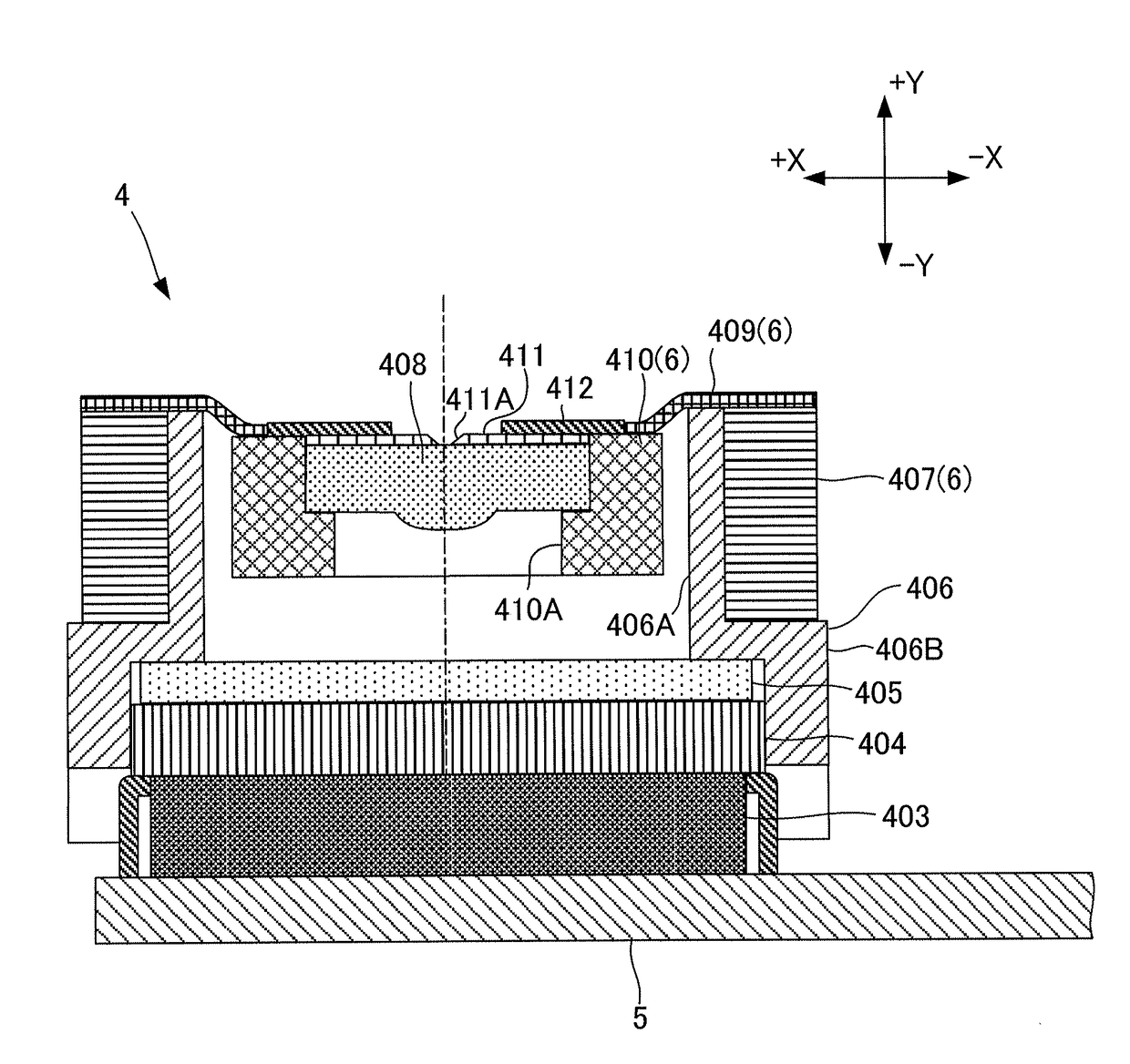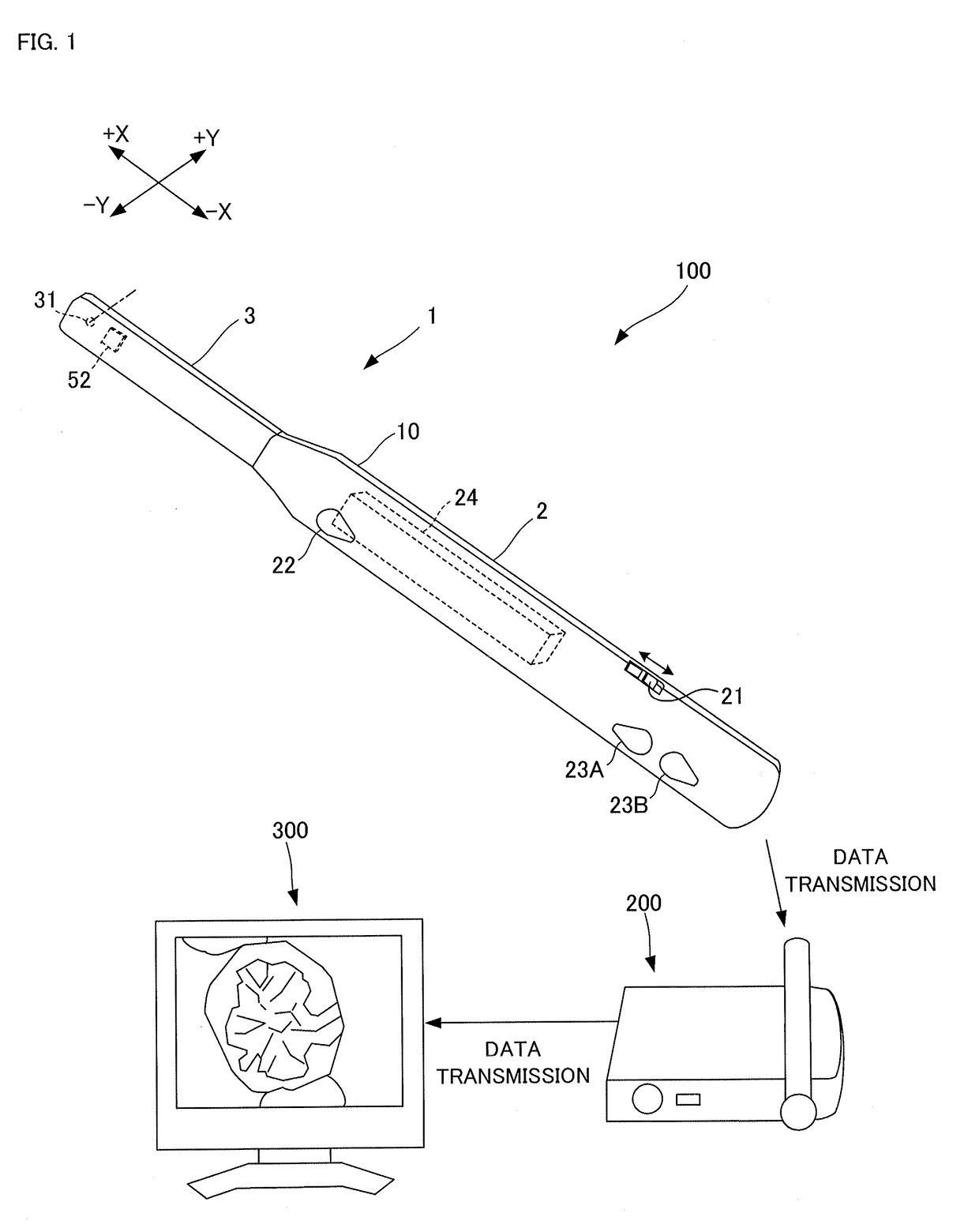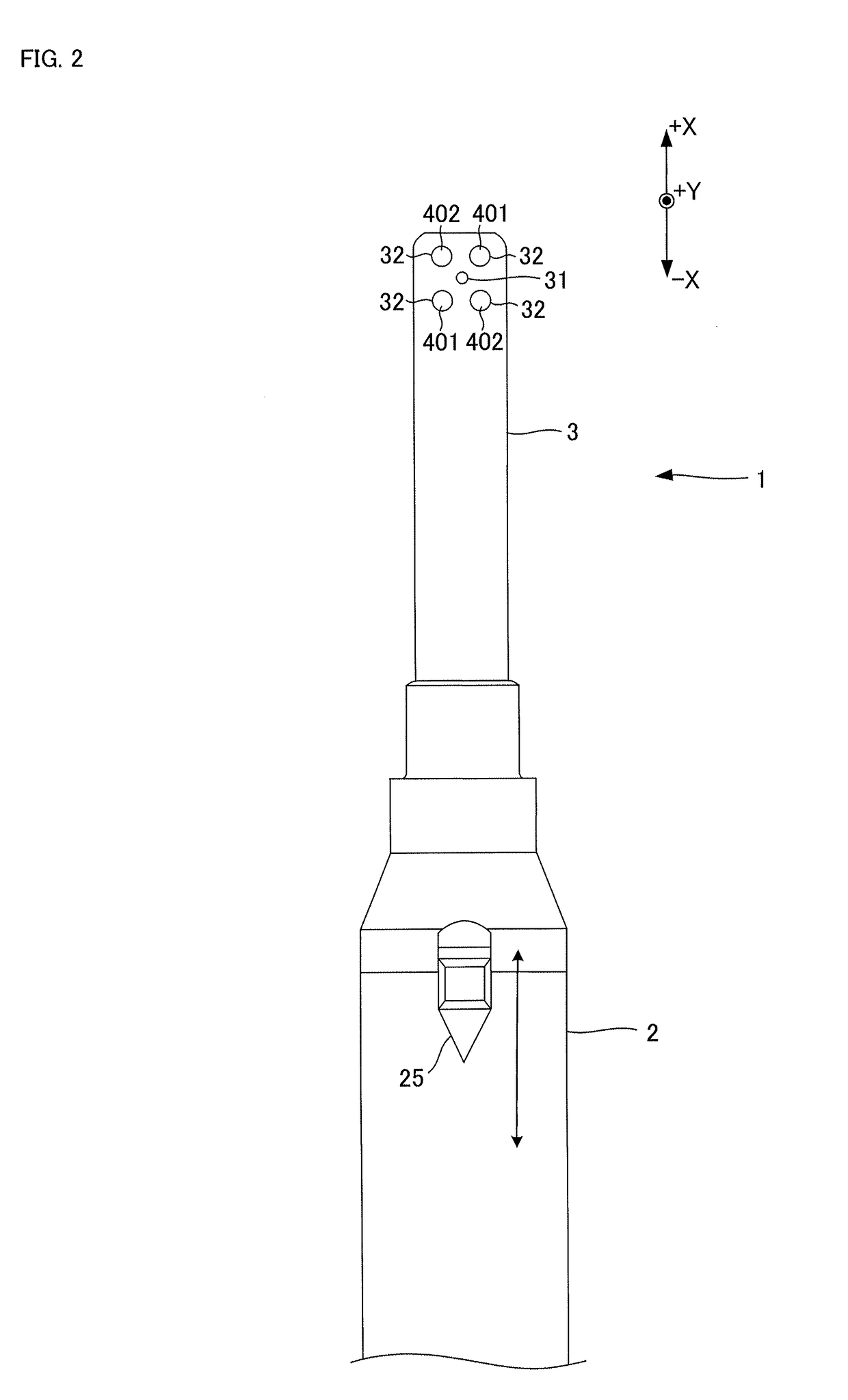Imaging apparatus and intraoral camera
a technology of intraoral camera and imaging apparatus, which is applied in the direction of cameras, printers, instruments, etc., can solve the problem that the focus cannot be adjusted with high accuracy, and achieve the effect of facilitating the use of intraoral cameras
- Summary
- Abstract
- Description
- Claims
- Application Information
AI Technical Summary
Benefits of technology
Problems solved by technology
Method used
Image
Examples
first embodiment
(First Embodiment)
[0030]FIG. 1 is a diagram illustrating an intraoral imaging system 100.
[0031]The intraoral imaging system 100 includes an intraoral camera 1 (imaging apparatus), a relay device 200, and an external device 300.
[0032]The intraoral camera 1 captures an image of an object such as a row of teeth in an oral cavity. The intraoral camera 1 communicates with the relay device 200 by radio to transmit the captured image to the external device 300 via the relay device 200.
[0033]The intraoral camera 1 includes a case 10 extending in the X direction.
[0034]The case 10 includes a gripping portion 2 extending in the X direction, and an insertion portion 3 which extends in the X direction from one end of the gripping portion 2 and is narrower than the gripping portion 2. In the following description, the X direction is defined to be negative toward the gripping portion 2 and positive toward the insertion portion 3. The gripping portion 2 has an almost cylindrical outer shape. The in...
second embodiment
(Second Embodiment)
[0089]FIG. 7 is a cross-sectional view illustrating an example of a capsule endoscope 1A to which an imaging apparatus according to the present invention is applied.
[0090]In the capsule endoscope 1A, a case 310 extends in the horizontal direction of FIG. 7 and has a central axis XA. The case 310 includes, at its distal end, a transparent portion 311 which transmits light. The case 310 accommodates an imaging unit 4A opposed to the transparent portion 311. The imaging unit 4A is oriented so that the optical axis of a focusing lens 408 is tilted with respect to the central axis XA.
[0091]The imaging unit 4A includes a plurality of LEDs 413 which emit light beams having different wavelengths, the focusing lens 408, a magnet 410, a coil 407, and an imaging device 403, as in the first embodiment.
[0092]The capsule endoscope 1A moves in a living body while the imaging unit 4A is assuming an attitude that enables imaging of objects seen ahead in the moving direction. The c...
third embodiment
(Third Embodiment)
[0096]FIG. 8 is a cross-sectional view illustrating an example of a capsule endoscope 1B to which an imaging apparatus according to the present invention is applied.
[0097]The capsule endoscope 1B has a double-case structure and includes an outer case 312 and an inner case 313 positioned inside the outer case 312. The inner case 313 can rotate about a central axis XB. The outer case 312 has, at its longitudinal central portion, a transparent portion 314 formed over the entire circumferential length. The inner case 313 has, at its longitudinal central portion, a transparent portion 316 as well. A plurality of LEDs 414 which emit light beams having different wavelengths surround the transparent portion 316. A magnet 315 is provided on the side of one end in the outer case 312.
[0098]An imaging unit 4B is opposed to the transparent portion 316 in the inner case 313 and captures images of the interior walls of, for example, a small intestine via the transparent portions ...
PUM
 Login to View More
Login to View More Abstract
Description
Claims
Application Information
 Login to View More
Login to View More - R&D
- Intellectual Property
- Life Sciences
- Materials
- Tech Scout
- Unparalleled Data Quality
- Higher Quality Content
- 60% Fewer Hallucinations
Browse by: Latest US Patents, China's latest patents, Technical Efficacy Thesaurus, Application Domain, Technology Topic, Popular Technical Reports.
© 2025 PatSnap. All rights reserved.Legal|Privacy policy|Modern Slavery Act Transparency Statement|Sitemap|About US| Contact US: help@patsnap.com



